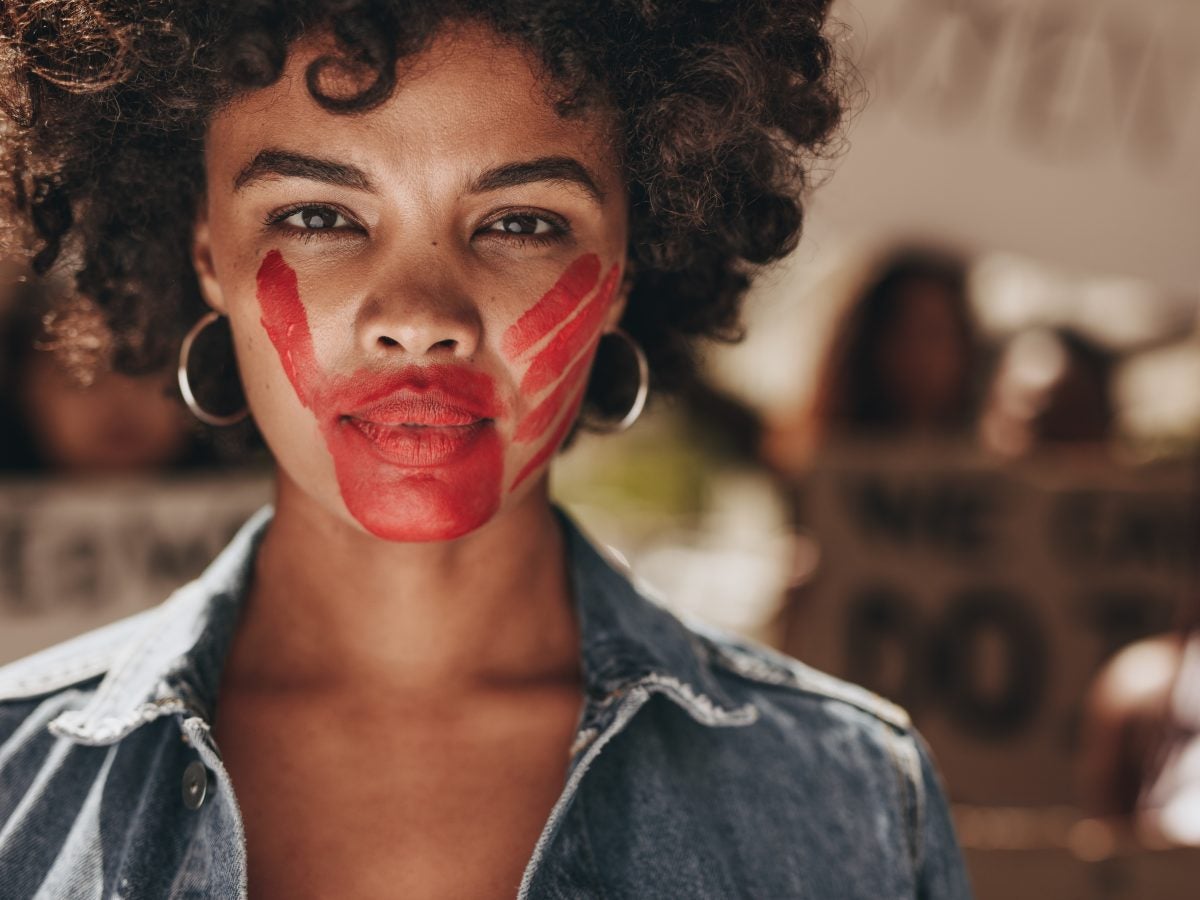
Just because Domestic Violence Awareness Month is coming to a close doesn’t mean we need to stop shedding light on this serious issue that affects 1 in 3 women in the United States, many of whom suffer in silence. That statistic is staggering, right? Well, here are a few more: Women between the ages of 18-24 are most commonly abused by an intimate partner, while on average, nearly 20 people per minute are physically abused by an intimate partner in the United States (which amounts to about 20 million people per year), and three women are killed every day by a current or former intimate partner. In addition to all of that, Black women have the highest rates of domestic violence (DV) or intimate partner violence (IPV) compared to White and Hispanic women, according to the Women of Color Network.
And now, throw the COVID-19 pandemic into the mix. With couples and families quarantining and being cooped up inside together, incidences of domestic violence have risen, with emergency DV hotlines ringing off the hook over the last several months. This increase prompted the Secretary General of the United Nations to issue the following statement on Twitter in April: Many women under lockdown for #COVID19 face violence where they should be safest: in their own homes. I urge all governments to put women’s safety first as they respond to the pandemic.
“While physical and sexual abuse are the most recognized forms of domestic violence, we can’t forget the other types, which are just as damaging,” says Neisha Himes, founder and CEO of the Virginia-based organization G.R.O.W. (Girls Recognizing Our Worth) and author of Crowns & Couplets: Healing Through Color & Poetry, a coloring book for DV survivors. “There is emotional and psychological abuse where your partner gaslights you, blames you for everything, or threatens to harm you or themselves if you leave. As well as financial abuse which is prevalent in 99 percent of DV cases. The partner controls the money, credit cards, and bank accounts, and keeps you from working, or sabotages your job, steals money from you or gives you an ‘allowance.’”

Himes also says that immigration abuse where a partner hides Visa documentation, threatens to have you deported if abuse is reported, or won’t allow you to learn English, or destroys documentation paperwork is also common, as well as religious abuse, in which the partner uses personal religious beliefs to manipulate and control their mate, preventing the victim from practicing their faith or shaming victim for their beliefs.

Are you experiencing domestic violence? Here’s what to do:
Know it’s not your fault
First and foremost, no matter what type of abuse you’re experiencing, don’t blame yourself. No one deserves to be abused so don’t normalize or downplay the situation or believe this is happening to you because of something you did.
Tell Someone
Call a domestic abuse helpline, like the National Domestic Violence Hotline (800-799-SAFE) and speak to someone trained to advise you and offer strategies based on your local laws. They may also be able to give you tips on finding a woman’s shelter in your area. Himes also recommends WomensLaw.org as a resource. “They provide plain language legal information and resources for each state, county by county, as well as information on how to get a protective order, file for custody, obtain shelter, and seek counseling,” she says.
Get An order Of Protection
If you are the victim of DV you have every right to seek a legal order of protection issued by your state court which requires your partner to stay away from you. Learn more about restraining order laws in your state at WomensLaw.org.
Document The Abuse
This is especially important if you file a police report. Make sure you keep a record of your injuries or any other type of abuse, whether that’s by taking photos, filming or recording the abuse (if you can), or keeping all incriminating text messages, DMs, social media posts, and emails.
Leave
Himes knows that sometimes leaving is easier said than done, “Yes, a woman should leave a relationship immediately upon the onset of toxic and/or violent behavior,” says Himes. “However, it is truly not that simple to just leave. In fact, leaving an abuser is the most dangerous time for a victim of domestic violence as the abuser thrives off power and control, and when those are lost, they have nothing to lose.”
Have A Safety Plan
If you do plan to leave, have a solid plan for yourself and if you have some, your children. Pack bag that includes clothes, cash or credit cards, birth certificate(s), driver’s license, keys, social security card(s), passport(s), medicine, school papers, insurance documents, medical records, and custody papers. “If you have kids, create a ‘safe word’ for you and your children to use to alert family or friends of danger,” advises Himes.
Call 911







If in immediate danger, call the police as soon as possible.







